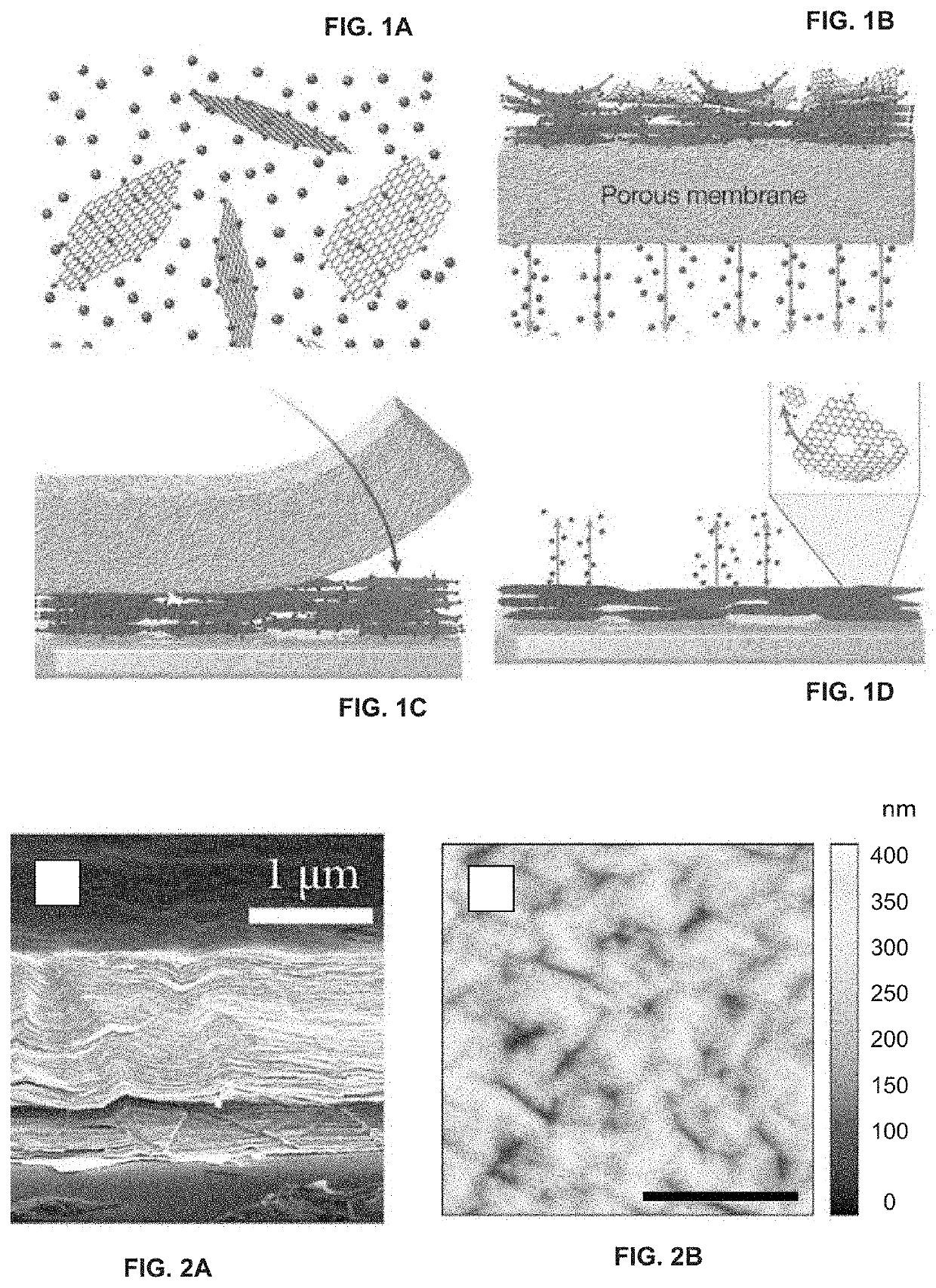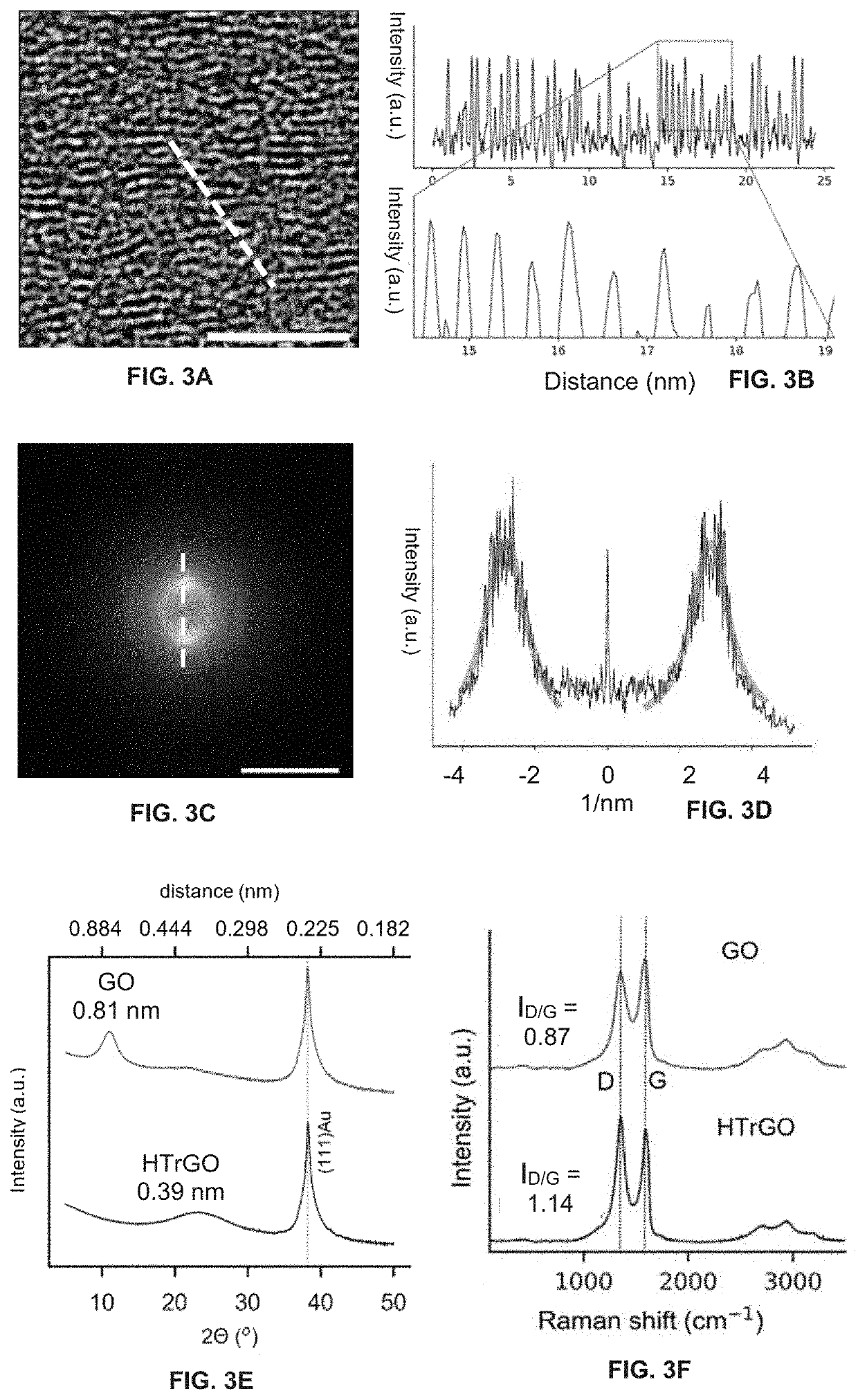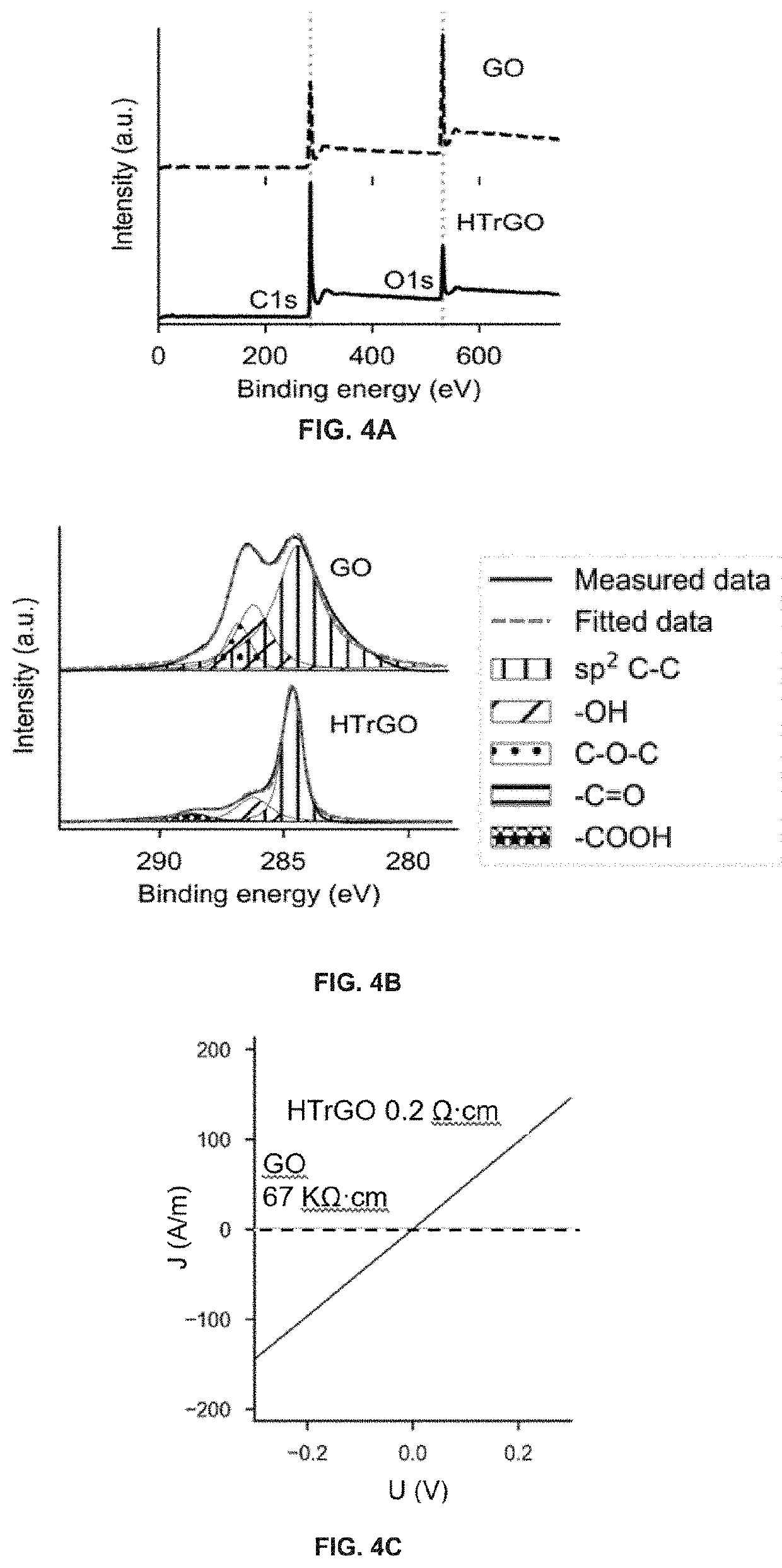Reduced graphene oxide film comprising a stack of rgo layers and its applications
a graphene oxide and stack technology, applied in the field of reducing graphene oxide (rgo) films comprising a stack of rgo layers, can solve the problems of electrode miniaturization limitations, damage to tissue, electrode degradation, etc., and achieve low interfacial impedance (z), increase electrochemical active surface area, and high charge injection properties
- Summary
- Abstract
- Description
- Claims
- Application Information
AI Technical Summary
Benefits of technology
Problems solved by technology
Method used
Image
Examples
example 2
mally Reduced Graphene Oxide Film (HTrGO) with Additional Conductive Support (Single Layer Graphene)
[0186]Single layer graphene (SLG) was grown by chemical vapour deposition on a copper foil (Alfa Aesar Coated). The copper foil was loaded in a planar quartz tube (length: 1600 mm, inner diameter: 60 mm) heated by a three zone oven. A first annealing step at 1015° C. under a 400 sccm Argon flow at 10000 Pa (10 KPa) during 1 h was followed by a 15-min growth step at 1200 Pa (1.2 KPa) under a gas mix of 1000 sccm Argon, 200 sccm hydrogen and 2 sccm methane.
[0187]A wet chemical method was used to transfer the graphene from the copper foil to the SiO2 substrate. First, a poly(methyl methacrylate) PMMA A2 (MicroChem) was deposited on the graphene / copper foil and was let dry for 12 h. Subsequently, the back side graphene was etched. To achieve this, the sample was laid at the surface of an etchant solution composed of FeCl3 / HCl (0.5M / 2M) for 2 min. The back of the sample side was then flush...
example 3
trode Based on a HTrGO / SLG Stack (EGNITE)
[0190]A single layer graphene (SLG) was grown as described in Example 2.
[0191]A metallic microelectrode was defined onto a SiO2 wafer as follows. First, the wafer was patterned with a photoresist (AZ5214 MichroChemicals GmbH) using standard optical lithography methods; a circular pattern with a diameter of 25 micrometers was open in the photoresist. Afterwards, a layer of chromium (10 nm) / gold (200 nm) was evaporated onto the wafer. Afterwards, the photoresist was removed by immersing the wafer in acetone; then in isopropanol and finally the wafer was blown dry. Then, the SLG was transferred onto the wafer with the microelectrode as described in Example 2. The filtered GO film was transferred onto the SLG as described in steps 1 and 2 of Example 1, in which the SiO2 wafer is now substituted by the SLG / SiO2 stack described in Example 2. At this moment, the area of the graphene-containing microelectrode was defined by using a combination of pho...
example 4
Microelectrode Array Based on a HTrGO / SLG Stack
[0197]An array of 64 microelectrodes, arranged in a 8×8 matrix and covering a total area of 1.44 mm2 was prepared. The microelectrodes have a diameter of 25 μm and are spaced 300 μm from each other.
[0198]First, a 10 μm thick layer of Polyimide (PI, PI 2611 HD MicroSystems) was spin coated and cured on top of a SiO2 wafer. On this substrate PI layer, gold leads (consisting of a bilayer of Ti and Au, 10 nm Ti and 200 nm Au) were patterned by optical lithography and electron-beam metal evaporation. This was followed by the SLG and the GO film transfer, and their patterning by photolithography and reactive ion etching. Next, a passivation layer of PI with openings on the microelectrodes prevented any leakage of the leads. Then, a combination of optical lithography and reactive ion etching was used to pattern the edges of the device by cutting the substrate and passivation layers of the PI. Finally, the devices were peeled off from the SiO2 ...
PUM
| Property | Measurement | Unit |
|---|---|---|
| thickness | aaaaa | aaaaa |
| thickness | aaaaa | aaaaa |
| concentration | aaaaa | aaaaa |
Abstract
Description
Claims
Application Information
 Login to View More
Login to View More - R&D
- Intellectual Property
- Life Sciences
- Materials
- Tech Scout
- Unparalleled Data Quality
- Higher Quality Content
- 60% Fewer Hallucinations
Browse by: Latest US Patents, China's latest patents, Technical Efficacy Thesaurus, Application Domain, Technology Topic, Popular Technical Reports.
© 2025 PatSnap. All rights reserved.Legal|Privacy policy|Modern Slavery Act Transparency Statement|Sitemap|About US| Contact US: help@patsnap.com



